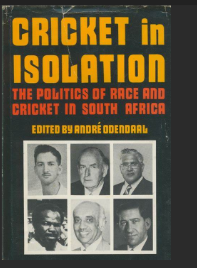Introduction
Cricket in Pakistan is not merely a sport but a national passion, intricately tied to the country's identity. However, the sport's governing body, the Pakistan Cricket Board (PCB) has long been entangled in the web of political instability, reflecting broader systemic issues. This analysis explores how political turbulence permeates the PCB, undermining its efficacy and perpetuating vested interests prioritising personal gain over national progress.
1. Political Instability and Governance Chaos - Leadership Musical Chairs: The PCB’s governance structure, where the Prime Minister appoints the board chairman, ensures that political transitions directly impact its leadership. For instance, the ouster of Imran Khan’s government in 2022 led to the dismissal of Ramiz Raja as PCB chief, replaced by Najam Sethi, a figure aligned with the incoming coalition. Such frequent changes disrupt long-term planning, fostering policy inconsistency.
- Policy Reversals: Each administration imposes its vision, often scrapping predecessor initiatives. The abrupt shift from a regional cricket model to a departmental system under Sethi exemplifies this, destabilizing domestic cricket and player development.
- Financial Mismanagement: Political interference often diverts resources toward short-term projects, such as hosting high-profile tours for political mileage, while neglecting infrastructure. Stadiums in politically marginalized regions like Balochistan remain underdeveloped, reflecting skewed priorities.
2. Vested Interests and Institutional Corruption - Nepotism and Patronage: PCB appointments frequently reward political loyalty over merit. For example, the hiring of coaches or selectors with dubious credentials but strong political ties has led to questionable team decisions, eroding performance.
- Contractual Cronyism: Lucrative broadcasting and sponsorship deals, such as those with media groups close to ruling elites, often bypass transparency. The 2018 PSL broadcast rights controversy, where bids were allegedly manipulated, underscores this crony capitalism.
- Player Quotas and Regional Bias: To appease political allies, quotas for players from specific provinces (e.g., Khyber Pakhtunkhwa or Sindh) are enforced, undermining team cohesion and meritocracy.
3. External Repercussions of Political Dysfunction - International Isolation: Political volatility exacerbates security concerns, deterring teams from touring Pakistan. The 2009 attack on Sri Lankan players led to a decade-long exile from home games, costing the PCB revenue and fan engagement. Even today, sporadic unrest, such as the 2023 political riots, risks reviving these fears.
- Bilateral Relations and Cricket Diplomacy: Tensions with India, often politicized, have frozen cricketing ties since 2008, depriving PCB of lucrative matches. Political posturing on both sides prioritizes nationalism over sport, harming players and fans alike.
4. The Cost to National Pride and Progress The PCB’s politicization has tangible consequences: inconsistent team performance, underfunded grassroots programs, and a declining talent pipeline. While countries like India and Australia invest in data-driven coaching and youth academies, Pakistan lags, its board mired in survivalist tactics. The 2023 ODI World Cup debacle, where tactical blunders and poor preparation were evident, highlighted this institutional decay.
Conclusion
Political instability transforms the PCB into a microcosm of Pakistan’s governance crisis, where vested interests exploit cricket for power and profit. Until the board is insulated from political machinations through structural reforms—such as an independent appointment committee and transparent financial oversight—Pakistan’s cricketing future will remain hostage to the whims of its ruling elite. The stakes are high: beyond lost matches, it's the erosion of a unifying national passion which once brought pride to a fractured nation.












No comments:
Post a Comment